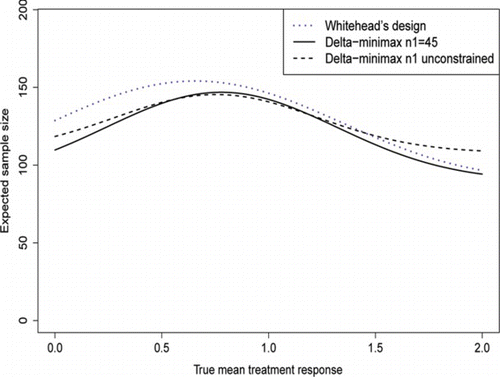Figures & data
Figure 1 Plot of expected sample sizes of each optimal design against true mean treatment response, δ, for (α, β) = (0.05, 0.1). (Color figure available online.).
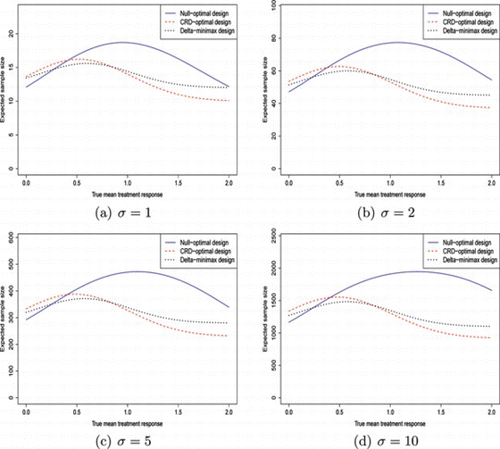
Table 1 Optimal designs and their expected sample sizes when δ = 0, δ*, or  for (α, β) = (0.05, 0.1)
for (α, β) = (0.05, 0.1)
Table 2 Ratio of maximum E(N) under CRD-optimal and designs to maximum E(N) under δ-minimax design
Figure 2 Plots comparing probability of stopping after first stage for different values of δ for null-optimal (blue), CRD-optimal (red), and δ-minimax (black) designs. (α, β) = (0.05, 0.1), σ = 10. (a) Probability of stopping for efficacy (dashed) and futility (solid) after stage 1 for three optimal designs. (b) Total probability of early termination.
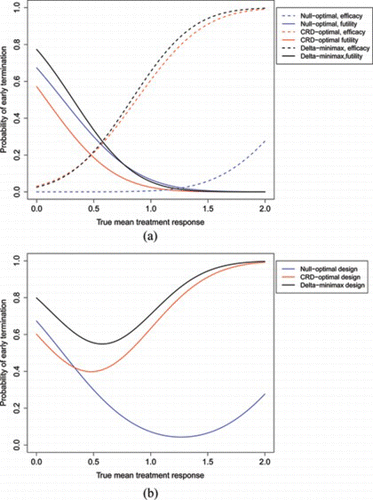
Figure 3 Plot of expected sample sizes against true treatment effect, (α, β) = (0.05, 0.2). (Color figure available online.).
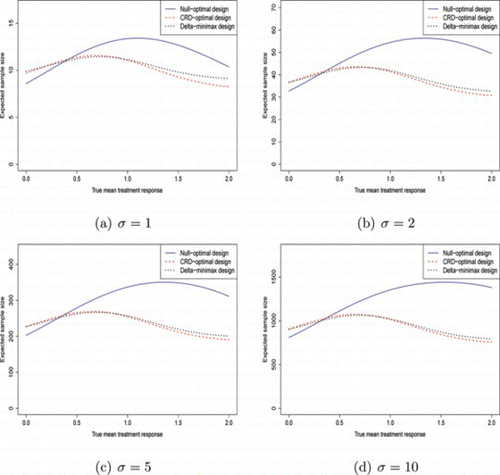
Figure 4 Plot of expected sample sizes against true treatment effect, (α, β) = (0.1, 0.1). (Color figure available online.).
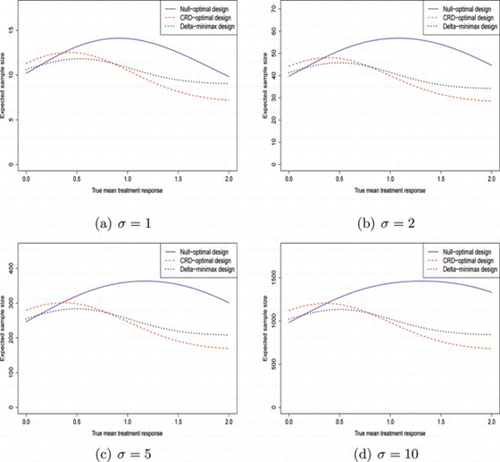
Table 3 Optimal designs and their expected sample sizes for (α, β) = (0.05, 0.2)
Table 4 Optimal designs and their expected sample sizes for (α, β) = (0.1, 0.1)
Table 5 Comparison of design parameters and resulting expected sample sizes between (1) the first design in Table 1 in Whitehead et al. (Citation2009), (2) the δ-minimax design with n 1 constrained to be 45, and (3) the δ-minimax design with n 1 unconstrained
Figure 5 Comparison of expected sample sizes, as the true δ varies, between the three designs in Table 5. (Color figure available online.).
